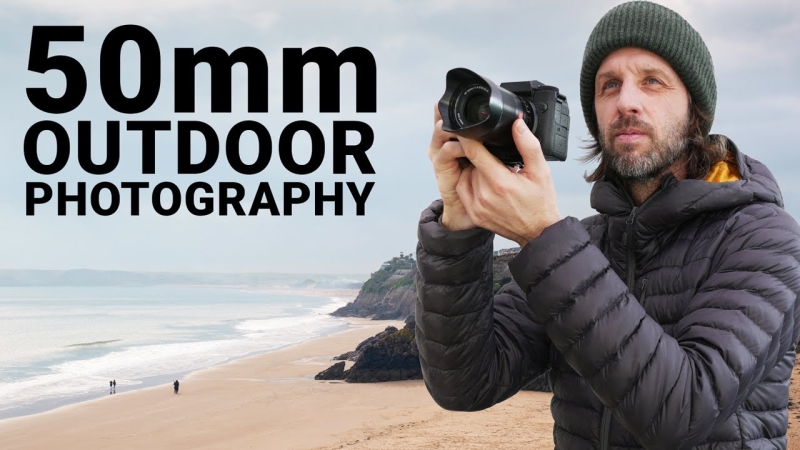Contents
If you’re into photography, you’ve probably heard the hype about the 50mm prime lens. Often referred to as the “nifty fifty,” this little lens is a favourite among portrait photographers for its versatility, portability, and ability to capture stunning images. But can it really hold its own in landscape photography?
It’s a clunky focal length generally for landscapes – too wide to shoot distant details and abstracts, yet too narrow to get sweeping vistas. But maybe, it has a place. In this video Ian Worth puts it to the test during a photo walk in Wales. He shares some practical tips to help you make the most of this iconic lens.
Why the 50mm Lens is So Beloved
The 50mm lens is often described as the closest thing to how the human eye sees the world. This natural perspective makes your photos feel immersive and relatable. Here’s why it’s such a standout:
- Natural Perspective: The 50mm focal length closely mimics the field of view of the human eye, offering a realistic and balanced composition.
- Minimal Distortion: Unlike wide-angle lenses that can stretch objects or telephoto lenses that compress scenes, the 50mm keeps proportions true to life.
- Depth Perception: Objects in your frame relate to each other in a way that feels natural, creating a sense of depth without exaggeration.
Ian used a 33mm lens on a crop sensor camera, which effectively gives a 49.5mm focal length—close enough to the classic 50mm experience. Paired with an aperture of f/1.4, he was able to achieve that dreamy shallow depth of field, perfect for isolating subjects or adding a creative touch to shots.
Why the 50mm is Perfect for Landscape Photography
You might think landscape photography requires ultra-wide lenses to capture sweeping vistas, but the 50mm lens offers a unique approach. Here’s why it works so well:
- Versatility: The 50mm lens is a jack-of-all-trades. It’s great for capturing environmental details, architectural elements, and even portraits. During the walk, Ian switched seamlessly from shooting the harbor to capturing street scenes and historical buildings.
- Lightweight and Portable: One of the biggest advantages of the 50mm lens is its size. It’s small, lightweight, and perfect for travel or spontaneous photo walks. You can carry your entire kit in a single sling bag, which makes exploring easier.
- Image Quality: Prime lenses like the 50mm are often sharper than zoom lenses, even in the corners of the frame. This makes them a favorite among professionals who prioritize clarity and detail. Although this isn’t true for the expensive zoom lenses it certainly still holds true at the more budget end.
Practical Tips for Shooting Landscapes with a 50mm Lens
- Embrace the Challenge of a Fixed Focal Length: Shooting with a prime lens forces you to move around and find the best composition. Instead of zooming in or out, you’ll need to physically adjust your position, which can lead to more creative and thoughtful shots.
- Use Aperture to Your Advantage: With a wide aperture like f/1.4, you can create a shallow depth of field to isolate subjects or add a soft, dreamy effect. For landscapes, try stopping down to f/8 or f/11 to ensure everything from foreground to background is in focus.
- Look for Layers and Depth: The 50mm lens excels at capturing scenes with a natural sense of depth. Look for compositions with foreground interest, midground elements, and a compelling background to create dimension in your photos.
- Experiment with Light: The 50mm lens performs beautifully in soft, diffused light. During Ian’s walk, the hazy, overcast conditions created a gentle glow that illuminated the harbor and added a touch of magic to the scene.
- Don’t Be Afraid to Crop: If you find the 50mm focal length a bit tight for certain scenes, don’t hesitate to crop your images in post-processing. It’s better to capture a slightly wider shot and crop later than to miss the shot entirely.
When the 50mm Might Not Be the Best Choice
While the 50mm lens is incredibly versatile, Ian admits that there were moments during where he wished he had a wider lens. For example, he says he struggled to fit both a motorcycle in the foreground and the surrounding buildings into the frame. In situations like this, consider shooting a panorama or switching to a wider lens if you have one. Alternatively you could try the Brenizer method and stitch multiple images together in post.
Shooting with a 50mm lens is a fantastic way to challenge yourself creatively and simplify your photography process. Whether you’re capturing landscapes, street scenes, or portraits, this lens delivers exceptional image quality and a natural perspective that’s hard to beat. I find that I’m a much less lazy and more creative photographer when using prime lenses, I highly recommend it, even if you gravitate back to a zoom eventually.
Check out the video below, it’s worth taking the time to watch!

